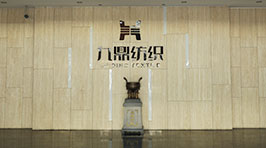
How Polyester Spandex Fabrics Are Made
Whether it's for undergarments, swimwear, or active lifestyle garments, polyester spandex fabrics provide premium comfort and elasticity. This is an ideal choice for clothing that needs to stretch or be form fitting. The fibers are lightweight, resistant to abrasion, and smooth to the touch. The blend of polyester and spandex allows for a durable and elastic fabric that is also breathable.
The polyester/spandex blend is usually made up of 90-92% polyester and 8-10% spandex. This makes the blend very stretchable and able to withstand high temperatures. It is also able to withstand water and air wapers, making it a great choice for sporty apparel.
The first step in producing spandex fibers is the preparation of the prepolymer. This is a chemical that forms the backbone of the fiber. It is produced by a reaction of compounds in the right conditions. This is a process that requires the use of renewable energy sources, such as solar and wind power.
A preparation agent is added to the prepolymer, which enables the solution to be more easily handled. After this step, the mixture is diluted and exposed to diamine acid. This process is called a chain extension reaction. This produces a long chain polymer, which is the main component of spandex.
The resulting segments are amorphous, which means that they have a random molecular structure. They are then twisted and reshaped. This process creates a series of elongated segments, which make the fiber stiffer and stronger. These segments bond with each other when the fiber reaches its maximum length.
The resulting strands are then pumped into a fiber production cell. The pressurized air forms strands of many different sizes. These strands are then bundled and transferred to the spool. Once the spool is filled, the fibers are ready to be woven into a fabric. The finished spandex fabric is then inspected to ensure that the physical and chemical characteristics of the product meet the specifications of the customer. The testing includes odor, color, absorbency, resilience, and more.
In addition, a finishing agent is added to the blend to prevent the fibers from sticking together. This agent can be magnesium stearate or another chemical. This allows for the fabric to be dyed or printed directly onto the fabric.
The finishing process allows for the fabric to be resistant to pilling and shrinking after washing. This process is used in a variety of textiles. Some of the most popular applications for spandex include sportswear, swimwear, and dye sublimation. The fabric is often used in motion capture suits in the film industry. It is also used in soft cotton leggings, as it provides a 4-way stretch.
The manufacturing of polyester spandex fabrics is done in a number of locations around the world. The most common plants are located in China. The majority of the companies that produce this fabric are international corporations. Some of the factories are locally owned in a single country.
As the production of synthetic fabrics has evolved, scientists have developed more efficient catalysts and fillers for the preparation of this material. This has improved the quality of the materials and the production of spandex.

The polyester/spandex blend is usually made up of 90-92% polyester and 8-10% spandex. This makes the blend very stretchable and able to withstand high temperatures. It is also able to withstand water and air wapers, making it a great choice for sporty apparel.
The first step in producing spandex fibers is the preparation of the prepolymer. This is a chemical that forms the backbone of the fiber. It is produced by a reaction of compounds in the right conditions. This is a process that requires the use of renewable energy sources, such as solar and wind power.
A preparation agent is added to the prepolymer, which enables the solution to be more easily handled. After this step, the mixture is diluted and exposed to diamine acid. This process is called a chain extension reaction. This produces a long chain polymer, which is the main component of spandex.
The resulting segments are amorphous, which means that they have a random molecular structure. They are then twisted and reshaped. This process creates a series of elongated segments, which make the fiber stiffer and stronger. These segments bond with each other when the fiber reaches its maximum length.
The resulting strands are then pumped into a fiber production cell. The pressurized air forms strands of many different sizes. These strands are then bundled and transferred to the spool. Once the spool is filled, the fibers are ready to be woven into a fabric. The finished spandex fabric is then inspected to ensure that the physical and chemical characteristics of the product meet the specifications of the customer. The testing includes odor, color, absorbency, resilience, and more.
In addition, a finishing agent is added to the blend to prevent the fibers from sticking together. This agent can be magnesium stearate or another chemical. This allows for the fabric to be dyed or printed directly onto the fabric.
The finishing process allows for the fabric to be resistant to pilling and shrinking after washing. This process is used in a variety of textiles. Some of the most popular applications for spandex include sportswear, swimwear, and dye sublimation. The fabric is often used in motion capture suits in the film industry. It is also used in soft cotton leggings, as it provides a 4-way stretch.
The manufacturing of polyester spandex fabrics is done in a number of locations around the world. The most common plants are located in China. The majority of the companies that produce this fabric are international corporations. Some of the factories are locally owned in a single country.
As the production of synthetic fabrics has evolved, scientists have developed more efficient catalysts and fillers for the preparation of this material. This has improved the quality of the materials and the production of spandex.












 中文简体
中文简体 English
English Español
Español русский
русский













